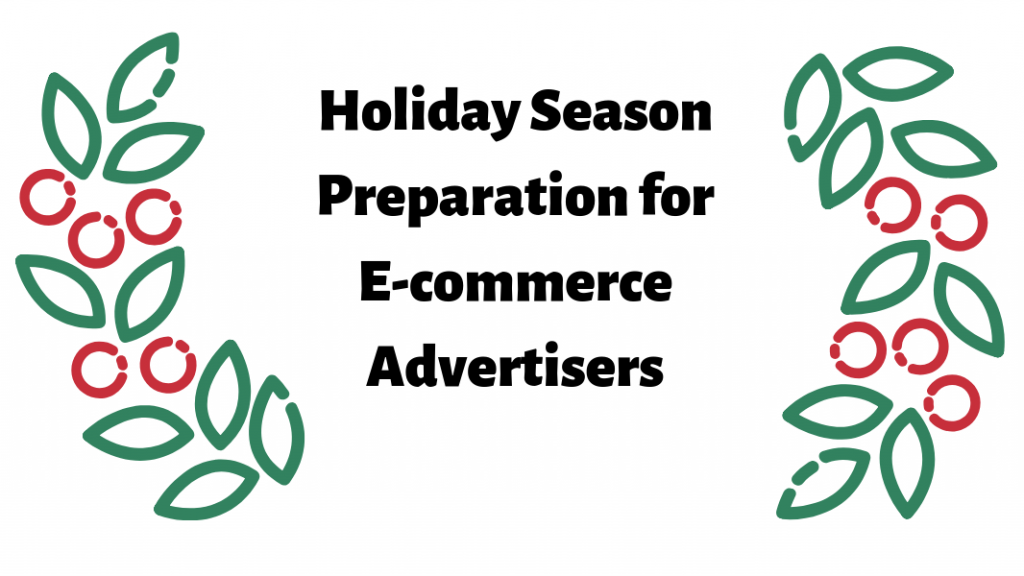Summer is the time when e-commerce and retailers start preparing for the busiest time of the year. The holiday season is the time to get your store ready and your strategy polished. Which are the key dates in the holiday season and how you should prepare for an e-commerce success?
Holiday season used to be associated with queues in stores, crowds fighting for discounted TVs. In general – a physically exhausting activity in a cold and dark season which is supposed to show to what extent you value your close ones. Now things are different – you can spend your money online stress-free and get your “proofs of love” conveniently delivered to your door. Search trends for popular retail chains raise in the holiday period and shopping has got a much more civilised outlook.
If you do a simple search for Currys on Google Trends, a major UK technology retailer, you see two gigantic spikes in search in the last twelve months: Black Friday and New Years
If you try almost every famous retail brand you will see similar spikes. What are the events of the calendar which typically see shopping increases?
31st Oct – Halloween
5th Nov – Bonfire Night
27th Nov – Black Friday Deals
30th Nov – Cyber Monday – Now Extends A Full Week
24th Dec – Xmas Eve – Sales Start
26th Dec – Boxing Day – Increased Sales Traffic
1st Jan – New Year Sales
1st Feb – Extended Sales (Valentines)
1st Mar – Extra Discounts (Mother’s Day)
The holiday season is extended by sales, where fashion companies typically see another spike in February. What should an advertiser do in order to prepare for the season?
Major platform and website changes
If you are not happy with the platform you have been using the summer is the time to change it, revamp your website and get all testing done safely. Last moment alterations and glitches may lead to terrible results. There is a variety of platforms you could be using for e commerce like Shoppify, Woocommerce, Ebay, Amazon. They all come with different pros and cons. Evaluating the results form the past or consulting with someone who has used them can help you decide if you have to make any changes to cut on unnecessary fees or reach markets you want to reach.
Make sure that these decisions are taken and executed early in a time when you are not risking losses if your new platform is glitching or your new website gets broken.
Revisit tagging and attribution
Make sure that all tags(conversion tracking) is working and recording correct numbers. Analyse the results you see on Google Analytics, Google Ads, Facebook and your CRM and compare if you are not double counting results. Conversions are measured differently in every platform, so you will never see a perfect match. Still make sure the gap is not 100%. If there have been changes on your website some tags might not fire at the right places any more.
Changing your attribution model is also a task which can be taken in the quieter summer period. By default many attribution systems give value only to the last click before a conversion takes place. The user journey is typically much more complicated than that, involving multiple devices and ad formats. Moving to an attribution model which is different from last click would help you understand how all your campaigns are working together. Channels which you might have underestimated might prove to be an important step on the way customers discover your products.
Improve your feeds
Any e-commerce advertising involves preparation of feeds. This is information about the products you are offering to generate product ads. This is the time to clean up any disapproval, cseasrucihcoeck on policies and update information. Depending on the platform you are using you might have an option to generate feeds automatically. Using Google Merchant Centre you can also create auto feeds. This option is recommended for smaller stores. If you have a lot of products, you can do auto updates on your feed via the Shopping API or use a third party feed manager to do this for you.
Test new campaigns
This is a perfect time to try new campaigns and fully automate your shopping marketing. You can use Google’s Smart Shopping Campaigns which do automated bidding, placement and ad creation. SDCs open more inventory to advertisers like YouTube, Gmail and GDN and Google Search. In the past you had to create an individual campaign for each of these, now this can all be automated to deliver your desired return on ad spend.
Similarly you can run product ads on Facebook across most of their properties – Facebook and Instagram. With multi-product ads you can have several different products in one ad unit, which you expand after clicking. Audience targeting is manual and you can do remarketing, lookalike or interest-based.
Testing new images and bidding strategies would help you be prepared when the demand increases over the holidays. Depending on your budget you can consider increasing your CPA or decreasing your return on ad spend. In this case you might spend more on ads, but sell more products. If you would like to stick to your current budget you can keep your strategy the way it is and try changing slightly CPA or ROAS by 10-15% and keeping the same budget. Increased traffic and conversion rates in the holiday season will still boost your results, but you might not capture the full demand.
About me: I am an experienced digital marketing professional and a Googler. I have taught over 3000 people in online marketing, sales and PPC. Get my new book. I blog weekly and teach on Udemy with more than 2,700 students enrolled in my online course. Subscribe to my YouTube channel. Follow on Instagram and Twitter @odolena

